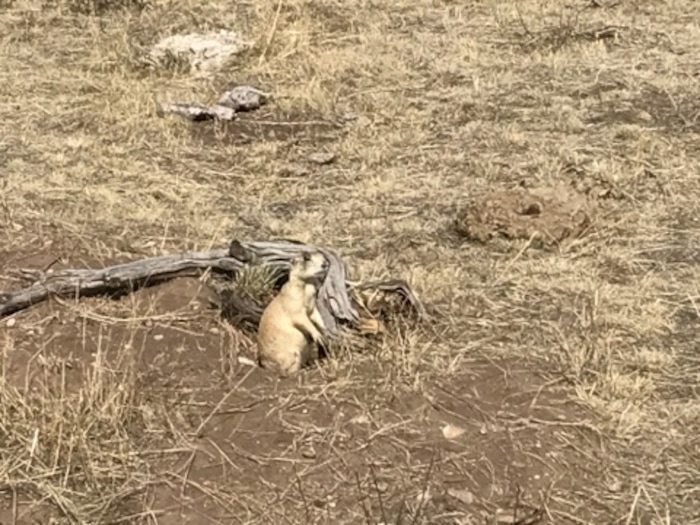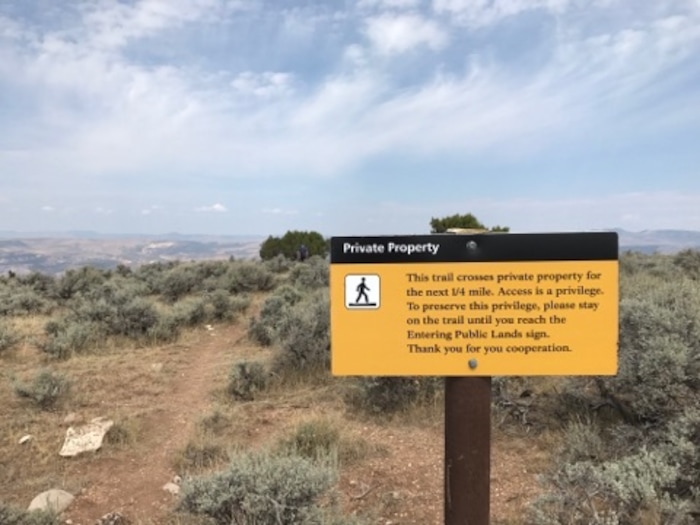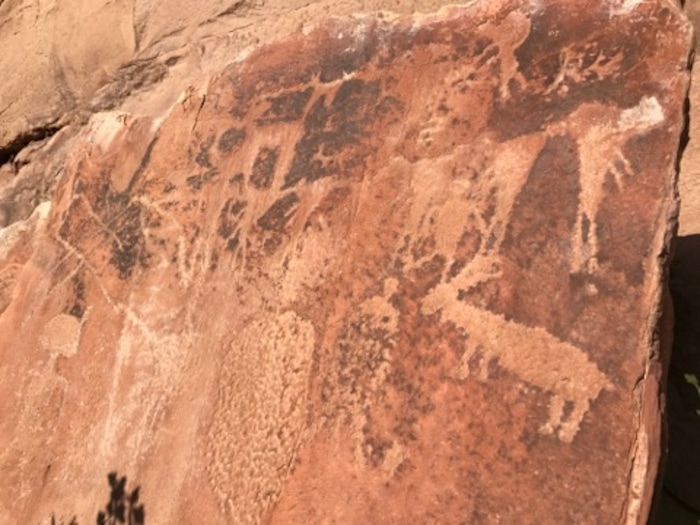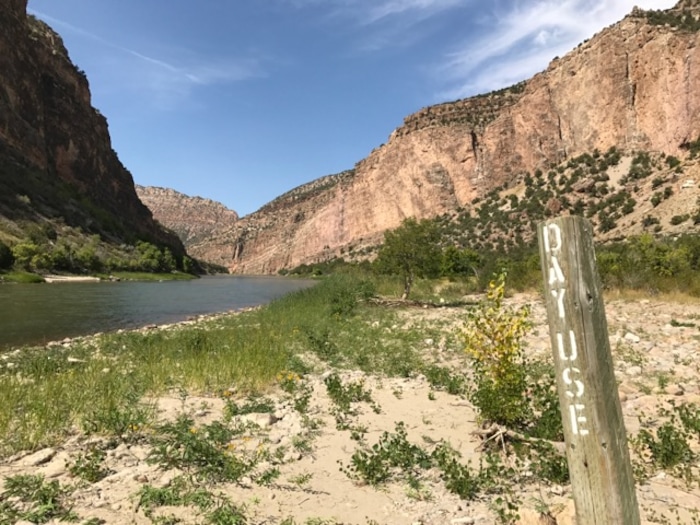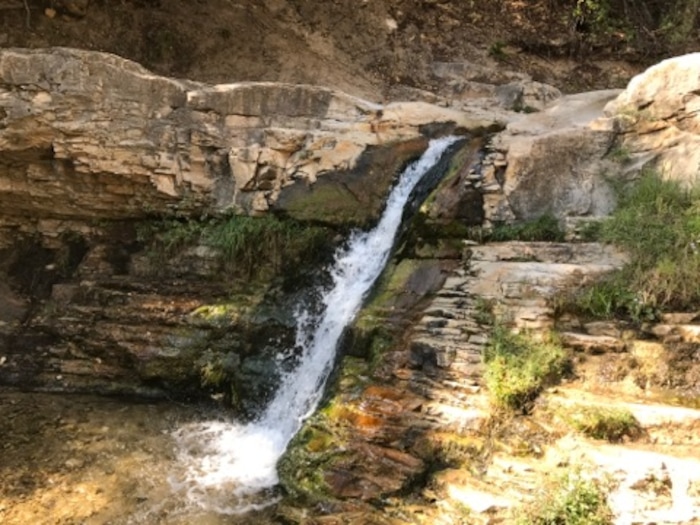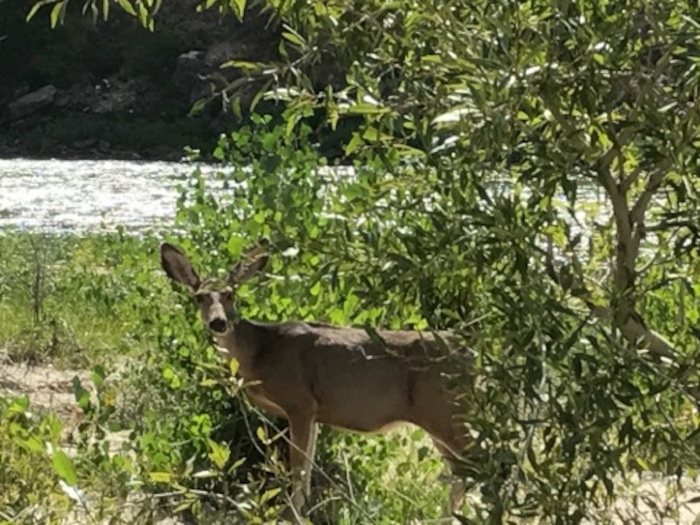Dinosaur National Monument, Colo. • We took a few minutes to sip coffee under the cottonwood trees along the Yampa River. We spent a few minutes more frying bacon and eggs and eating them for breakfast.
Then it was time to strike camp. If we wanted to go hiking and see the quarry at Dinosaur National Monument, we had to start driving.
Anyone who’s ever looked at Dinosaur National Monument on a map sees it straddles two states. That doesn’t do justice to the geographical situation. Wendover and West Wendover straddle two states — Utah and Nevada, respectively. You can drive through them in the time it takes to play two blackjack hands in a casino on the Silver State side.
Dinosaur is a road trip unto itself. Within its 329 square miles are rivers, deserts, thick woods, mountains, petroglyphs and, of course, dinosaur fossils. There are bigger monuments and parks, but Dinosaur is spread out in a shape resembling the digit 2, with only a few paved roads.
On the second weekend of September, I left Salt Lake City on a Friday afternoon and drove to Deerlodge Park — a campground and boat launch on the monument’s eastern edge. It was a good halfway point to meet my brother and his girlfriend coming from Denver.
I backtracked the next morning. The three of us drove our two cars west on U.S. Highway 40 to the visitor’s center just inside Colorado. Then we turned north onto a blacktop road that winds into Utah. We stopped at the Island Park Overlook — 77 miles and 90 minutes from where we started.
A white-tailed prairie dog poses along the Ruple Point Trail at Dinosaur National Monument on Sept. 9, 2017. Photo by Nate Carlisle/The Salt Lake Tribune
The overlook is also where the Ruple Point Trail begins. From the trailhead, we began walking east through a sagebrush desert. We quickly found a colony of white-tailed prairie dogs peeking in and out of their dens.
There were other animals along the trail, too, though not so wild. We passed range cattle and even a mare and foal. At 1.9 miles — almost the halfway point — we passed a sign warning us the next quarter-mile crosses private land and we needed to stay on the trail.
The trail reaches thick groves of pinyon pine trees just before arriving at its destination — an overlook high above the Green River. After eating the sandwiches we brought, we turned around and hiked the way we came.
The Green River sits below the Ruple Point Trail at Dinosaur National Monument on Sept. 9, 2017. Photo by Nate Carlisle/The Salt Lake Tribune
Then it was back into the cars. We had another 1-hour, 10-minute drive to the monument’s dinosaur quarry near Jensen, Utah. We took one of the afternoon’s last tours and got to see and feel bones that it didn’t seem we should be allowed to touch. We camped again for the night, this time in the campground near the quarry along the Green River.
My brother and his girlfriend had to drive back to Denver the next morning. I took a drive of my own — a 45-mile jagged semicircle around northeast Utah to Jones Hole Creek Fish Hatchery.
That’s also where the Jones Hole Trail begins. It was nothing like the previous day’s hike. The trail followed a canyon. There were cottonwood trees and aspen along the creek.
Near the trail’s halfway point, a sign guided me to Ely Creek and a short spur to a one-story waterfall. When I returned to the main trail, I hiked a little farther and found a meadow and bighorn sheep grazing there.
Petroglyphs sit on a rock wall on Sept. 10, 2017, alone Jones Hole Trail at Dinosaur National Monument. Photo by Nate Carlisle/The Salt Lake Tribune
There were human wonders, too. About 1.5 miles into the hike, there were petroglyphs on a rock wall. Backcountry campsites sat nearby.
Finally, 4 miles from where I started, the trail ended on a rocky beach along the Green River. A deer walked past me as I ate another sandwich under a cottonwood tree.
After the sandwich, it was time to start hiking back to the car. I still had to drive home.
A deer stands along the Green River at Dinosaur National Monument on Sept. 10, 2017. Photo by Nate Carlisle/The Salt Lake Tribune

